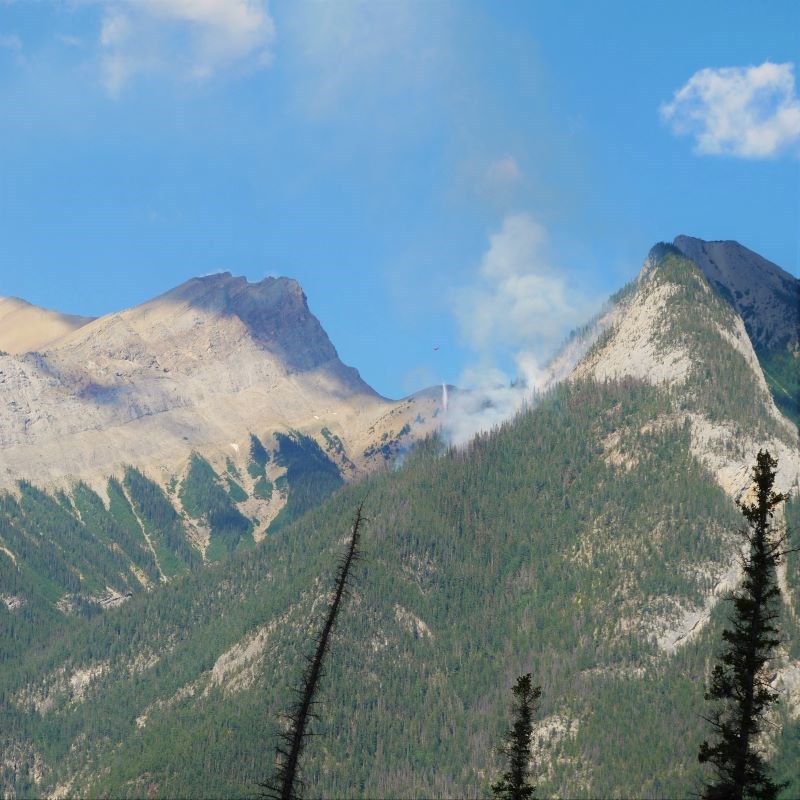Scott Hayes, Local Journalism Initiative Reporter | [email protected]
Parks Canada firefighters were already hard at work battling a small forest fire on Thursday morning.
Details are still developing, but it appears that a lightning strike from an unexpected thunderstorm on Wednesday evening is the culprit.
“There is no immediate danger to the Municipality of Jasper, residents and visitors. Parks Canada will provide additional information as it becomes available,” read a statement from Jasper National Park as posted to its Facebook page just after 10 a.m. on Thursday.
The wildfire is located east of Snaring Road on Chetamon Mountain, according to Kendra Neef, who posted photos and video on her It’s approximately 22 kilometres north of Jasper townsite and east of Snaring Road. The source is situated at a high elevation, burning near treeline on rocky, sparsely vegetated slopes, and its smoke plume makes it highly visible to motorists on Highway 16.
The two-hectare wildfire poses no risk to the Jasper townsite at this time.
Two helicopters have been bucketing water onto the blaze while three wildland firefighting crews have been in attendance to fight the flames on the ground. More resources are at the ready if needed, Parks Canada stated in a press release.

It was previously announced that the Snaring Overflow Campground would not open throughout the weekend as fire crews install structure protection.
Parks Canada later announced that it would be closing all park facilities along the Snaring and Celestine Lake Roads, including both Snaring and Snaring Overflow Campgrounds starting at noon on Friday, Sept. 2. Campers and backcountry users in the area were advised to prepare to leave the area.
“This closure is happening out of an abundance of caution and to enable Parks Canada fire operations to stage out of the overflow campground area. Visitors planning to travel to these areas should begin making alternate plans,” Parks Canada stated in a press release.
Sprinklers have also been deployed to protect structures at the Moberly homestead.
According to Environment and Climate Change Canada’s , the average number of cloud-to-ground lightning flashes annually in Canada is more than 2.25 million with July being the month with the highest number out of the year.
“The most frequent time of day for lightning is between 1 p.m. and 6 p.m. local time for the majority of Canada,” the page reads, adding that nocturnal lightning can account for almost half of all lightning in some areas of the country. Jasper National Park is in an area that experiences 25 per cent.
Further updates can be found on
Editor's note: The story was updated at 5 p.m. Sept. 1.




